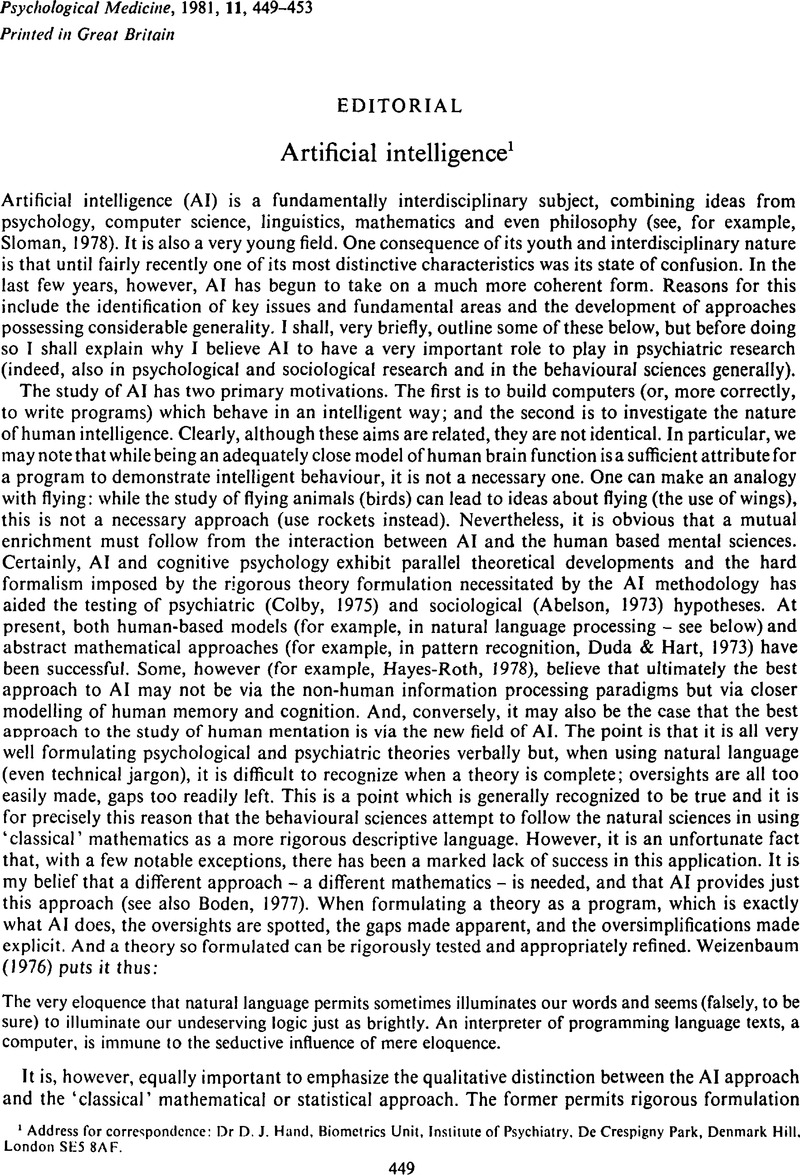Crossref Citations
This article has been cited by the following publications. This list is generated based on data provided by Crossref.
Kydd, R. R.
and
Wright, J. J.
1986.
Mental Phenomena as Changes of State in a Finite-State Machine.
Australian & New Zealand Journal of Psychiatry,
Vol. 20,
Issue. 2,
p.
158.
Hand, D J
1987.
Artificial Intelligence and Medicine: Discussion Paper.
Journal of the Royal Society of Medicine,
Vol. 80,
Issue. 9,
p.
563.



